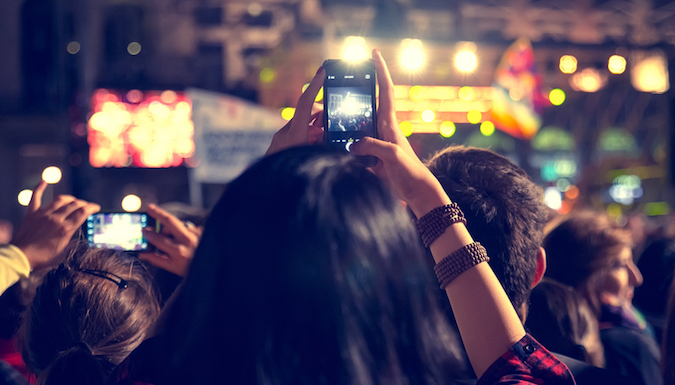The changing landscape of photography
Share

The ability to capture and share hi-resolution images without restriction has changed the way we take and view photos. Shane Stewart asks what takes the form of a camera today, and where photos are going in the future.
With the rapid growth of smart phones and an evolving connected world; the way we take, interact and enjoy photos is changing. What takes the form of a camera nowadays? Is it your smart phone? An Apple Watch? A tablet? Today a photo device is more than just what you snap, it’s how you edit, capture and portray the moment you experienced.
Traditionally, photos are taken as either portrait or landscape, but now the purpose of what we’re taking photos of is changing. The majority of photos we take now aren’t meant to be printed, their destination and purpose is for online viewing and sharing. The types of photos we are taking are also changing. We’re taking more selfies, more pictures of our friends, our outfits, our food, and in general we’re all just taking a lot more photos.
Instagram has been instrumental in the evolution of taking photos and sharing visual moments. Last week Instagram launched their new look with a new icon and design for the app. Instagram’s own media release recognises that the way we consume these moments has evolved, “The Instagram community has evolved over the past five years from a place to share filtered photos to so much more — a global community of interests sharing more than 80 million photos and videos every day. Our updated look reflects how vibrant and diverse your storytelling has become.”
–
–
So in the new realm of digital media, what format is the optimal picture? What size, ratio and setup should it be? Or does that even matter? Maybe cameras should instantly adapt photos to any screen size and adjust the photo to fit the medium it is being used on. Through new innovations such as the Lytro camera, which uses light field technology that allows you to refocus an image after the photo has been taken, we are changing how and what we take photos of.
Is the future of photos even a photo?
Photos are not just rapidly evolving because of the gear we’re using but also the mediums we’re posting to. Animated photos are now even blurring the lines between photos and video. Recent medium innovations such as Facebook/YouTube 360 photos, iPhone 6s motion pictures, internet streaming quality and animated gifs supported by Facebook, Tumblr and smart phones, are supporting a more fluid approach to capturing moments.
Even movies offer a great insight into the future of technology. Often their ideas seem completely outrageous but nonetheless it’s still interesting to watch what they come up with. For example, the newspapers in the Harry Potter films showed animated photos in the news columns. Now with Apple’s introduction of motion pictures and publications on tablets- is this a step in that direction?
Final thoughts
The future of professional photography may not be headed in this direction but general consumer focus is adapting to the changing way we share and interact with media. Smartphones have changed the game so much it’s plausible to deduce that ‘point and shoot’ cameras could be rendered obsolete, meaning consumers will solely rely on their phones to capture moments. As technology makes it easier and smarter to capture moments the distinction between professional photographers and amateurs is blurring. In this incredible world we live in, major players like Canon and Nikon need to be innovative or risk being left behind.
The camera as we once knew it is no longer. The lens remains a window through which we see the world…it’s just a slightly different, updated one. But above all else, go outside and take a picture!
* * * * *
Purchase a subscription for the latest in opinion and analysis of social media and sharing technology
* * * * *















